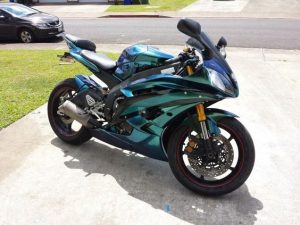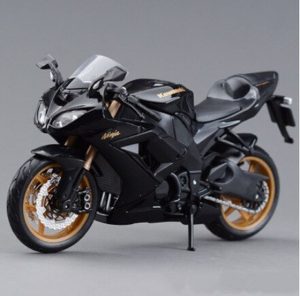May 29, 2024
How to Ride a Motorcycle for Beginners: A Beginner’s Guide
Motorcycles offer a thrilling riding experience, but they require respect and knowledge to operate safely. This guide is intended for beginners who are interested in learning how to ride a motorcycle.
Important Note: Before operating a motorcycle, you should take a safety course offered by a reputable motorcycle training organization. These courses teach essential skills and safety practices that can help prevent accidents.
Gearing Up for Safety
Motorcycle safety starts with wearing the right gear. Here are essential items:
Helmet:
Choose a Department of Transportation (DOT) certified helmet that fits snugly and comfortably.
Eye Protection:
Wear shatterproof eye protection like goggles or a full-face helmet visor.
Leathers or Heavy Clothing:
Leathers offer the best abrasion resistance, but thick jeans and a jacket are acceptable for beginners.
Gloves:
Leather gloves protect your hands in case of a fall.
Boots:
Sturdy boots with good ankle protection are crucial.
Familiarize Yourself with the Motorcycle
Before starting the motorcycle, get acquainted with the controls:
- Throttle: Controls engine speed (twist to accelerate, release to decelerate).
- Brakes: Front brake lever on the right handlebar, rear brake pedal on the right footpeg.
- Clutch: Lever on the left handlebar (engaged for gear changes, released for normal riding).
- Gear Shift: Lever on the left footpeg (used to change gears).
- Turn Signals: Buttons or switches on the handlebar to activate turn signals.
- Headlight: Controls the headlight beam.
- Mirrors: Adjust the mirrors for a clear rear view.
Finding a Safe Practice Area
For your first riding attempts, find a large, empty parking lot or open space free from traffic. A smooth, paved surface is ideal.
Mastering the Basics
Here’s a breakdown of essential motorcycle operation skills:
-
Starting and Stopping the Engine: Locate the ignition switch and familiarize yourself with the starting procedure. Once the engine is started, practice using the clutch and brake to come to a complete stop.
-
Clutch Control: Practice operating the clutch lever smoothly. Find the friction zone, which is the point where the engine engages and the motorcycle begins to move.
-
Balance and Steering: Balance is key to motorcycle operation. Practice slow-speed maneuvering to get a feel for the motorcycle’s weight and balance. Steering is done by turning the handlebars.
-
Shifting Gears: Once comfortable with clutch control, practice shifting gears. Consult your motorcycle’s owner’s manual for specific shifting instructions.
-
Braking: Practice controlled braking with both the front and rear brakes. Avoid grabbing the brakes too hard, which can lock the wheels and cause a skid.
Gradual Progression is Key
As you gain confidence with the basics, gradually increase the difficulty of your practice exercises. Here are some tips:
- Start slow and prioritize smooth control.
- Focus on mastering one skill before moving on to the next.
- Practice emergency braking techniques in a safe and controlled environment.
- Don’t hesitate to ask a qualified instructor for help if needed.
The Road to Responsible Riding
Once you’ve mastered the basics in a controlled environment, you can progress to riding on public roads. Here are some additional considerations:
- Motorcycle License: Obtain a motorcycle license by passing a written test and a skills test.
- Know the Rules of the Road: Familiarize yourself with traffic laws and regulations specific to motorcycles.
- Ride Defensively: Always anticipate the actions of other drivers and be prepared to react accordingly.
- Stay Alert and Avoid Distractions: Focus on the road and avoid distractions like using your phone while riding.
Learning to ride a motorcycle is a rewarding experience. By prioritizing safety, taking a qualified training course, and practicing responsibly, you can develop the skills and knowledge you need to enjoy riding for years to come.
Remember: Motorcycle riding can be risky. Always prioritize safety and never operate a motorcycle without proper training and licensing.
The Thrill of the Ride: Responsible Motorcycle Awareness
Motorcycles offer a unique and exciting riding experience, but they require a significant commitment to safety and responsibility. This guide is intended for beginners who are interested in learning more about motorcycles.
Important Note: In many regions, operating a motorcycle on public roads requires a specific motorcycle license. Licensing procedures and requirements can vary depending on your location.
Exploring the World of Motorcycles
There are many ways to experience the world of motorcycles without operating one yourself. Here are a few ideas:
- Attend a Motorcycle Safety Fair or Expo: These events often feature educational displays, safety demonstrations, and opportunities to talk to experienced riders.
- Watch Educational Videos: There are many online resources that offer motorcycle safety tips and tutorials.
- Read Motorcycle Magazines or Websites: Learn about different motorcycle makes and models, riding destinations, and motorcycle culture.
Passenger Safety on Motorcycles
If you’re considering riding as a passenger on a motorcycle, take passenger safety seriously. Here are some key points:
- Wear a DOT-approved helmet and proper safety gear.
- Hold on firmly to the rider or grab bars designed for passengers.
- Communicate with the rider and let them know if you feel uncomfortable.
- Be aware of your surroundings and traffic conditions.
Sharing the Road with Motorcycles
As a driver or pedestrian, sharing the road with motorcycles requires awareness and courtesy. Here are some tips:
- Give motorcycles a full lane of space.
- Use your turn signals well in advance of turning or changing lanes.
- Avoid tailgating motorcycles.
- Be aware of motorcycle blind spots.
Building Your Motorcycle Knowledge Base
Learning to ride a motorcycle is an exciting journey that requires knowledge beyond operation. Here are some ways to broaden your understanding of motorcycles as a beginner:
-
Motorcycle Mechanics: While you don’t need to be a mechanic yourself, familiarizing yourself with basic motorcycle components can be helpful. Online resources and motorcycle forums can provide explanations of different parts of a motorcycle and their functions.
-
Motorcycle Safety Gear: Motorcycle gear goes beyond helmets and jackets. Explore the different types of riding gear available, understanding the benefits of specific materials and features. This knowledge can help you make informed decisions when choosing your own gear.
Conclusion
Motorcycles are a popular mode of transportation and recreation. By understanding motorcycle safety and practicing responsible behavior, we can all help create a safer riding environment for everyone.
Remember: Motorcycle safety is a shared responsibility. Whether you’re a rider, passenger, driver, or pedestrian, prioritizing safety is key.




